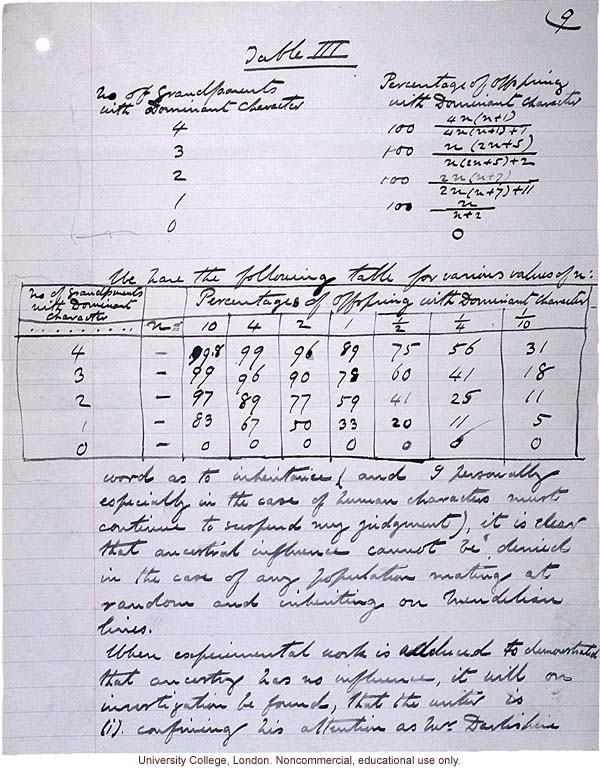[handwritten]
9
[tabular material]
Table III
No of grandparents with dominant character & Percentage of offspring with Dominant character
4 & 100 4n(n+1)[top of fraction]
4n(n+1) + 1[bottom of fraction]
3 & 100 n(2n + 5) [top of fraction]
n(2n + 5) + 2[bottom of fraction]
2 & 100 2n(n + 7) [top of fraction]
2n(n + 7) + 11[bottom of fraction]
1 & 100 n [top of fraction]
n + 2[bottom of fraction]
0 & 0
[end tabular material]
We have the following table for various values of n:
[tabular material]
No. of grandparents with Dominant character & Percentages of offspring with Dominant character:
. . . . . . . . . & n & 10 & 4 & 2 & 1 & 1/2 & 1/4 & 1/10
4 & -- & 99.8 & 99 & 96 & 89 7 75 & 56 & 31
3 & -- & 99 & 96 & 90 & 78 & 60 & 41 & 18
2 & -- & 97 & 89 & 77 & 59 & 41 & 25 & 11
1 & -- & 83 & 67 & 50 & 33 & 20 & 11 & 5
0 & -- & 0 & 0 & 0 & 0 & 0 & 0 & 0
[end tabular material]
word[?] as to inheritance (and I usually especially in the case of human characters must continue to suspend my judgment), it is clear that ancestral influence cannot be denied in the case of any population mating at random and inheriting on Mendelian lines.
When experimental work is adduced to demonstrated that ancestry has no influence, it will on investigation be found, that the writer is (i) confining his attention as Mr. Darlishire
[end]


